This was the 'Capitol' of Roman Verona. In the seventeenth century it was bought by the wealthy and influential Maffei family, overlooking Piazza delle Erbe, the ancient forum that for centuries was the political centre of the city. Now restored, the palace houses the rich collection of the Carlon Foundation. The director, Vanessa Carlon, and art historian Gabriella Belli, talk about the charm of a private residence where the ancient and the contemporary, art and science, are in dialogue.
Vanessa Carlon, what is the mission and potential of Palazzo Maffei Casa Museo? An investment in culture from a private entity with a public perspective, with what expectations? What are the future programmes? The collaborations? The focus on young people?
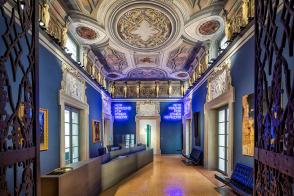
Photo Courtesy Palazzo Maffei
Palazzo Maffei is the house of art born from my father Luigi's passion and strong desire to share; we wanted it to be a place that would fascinate visitors, but where people would also like to come back for the various activities on offer. In the Teatrino of Palazzo Maffei, with its breathtaking view of Piazza delle Erbe, every weekend we hold meetings with artists, book and film presentations and workshops for children and adults.
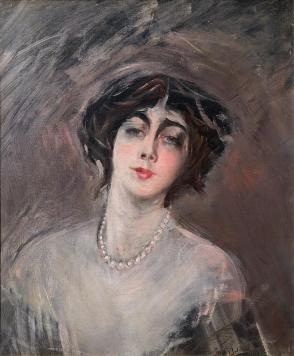
Photo Courtesy Palazzo Maffei
We try to promote innovative proposals such as Me Time, a contemporary dance choreography by Camilla Monga, to be followed with headphones, immersed in the electronic and acoustic soundscapes of the young
Federica Forlani; or Opening Night, an experience of 'auto-theatre' conceived by Silvia Mercuriali, our first artist-in-residence: a journey through the rooms in search of a festival heard but never reached. We have many projects in the pipeline aimed at involving and supporting young people and artists, developing the collection, and engaging in dialogue with art lovers and institutions working in this field.
Palazzo Maffei is now also a little bit ‘Palazzo Carlon’. It is your history. There is a great emotional involvement. How do you interpret the role of director?
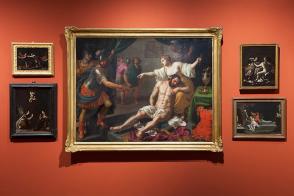
Photo Courtesy Palazzo Maffei
I feel privileged to be the director of the house museum, which tells the dream and the taste of the collection and encapsulates the values, the emotions, the identity of my family. What a responsibility! But art is an area I am passionate about and our staff are young people with whom I love to share projects. We have agreements with the University of Verona – Department of Cultures and Civilisations – and the Academy of Fine Arts, so the students involved work in the field they are studying and are happy to work in the house museum. This is an opportunity they did not have before: their joy is
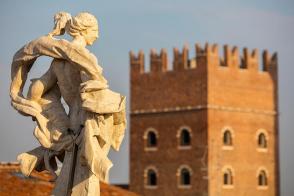
Photo Courtesy Palazzo Maffei
gratifying. The initiatives dedicated to high school students, especially those from fields of study less related to classical art, are very satisfying: it is nice to see the young people standing in front of the works with their mouths open. For those who are less familiar with art, we have created a social and educational project called "the hidden science in art", because knowledge is transversal and involves everyone; the important thing is to use the most appealing key.
Art is a family passion. Concerning some works bought by your father, you will remember every detail: how he came across them, how he courted them, the moment they entered the house. When and why was it decided to open the collections to the public?
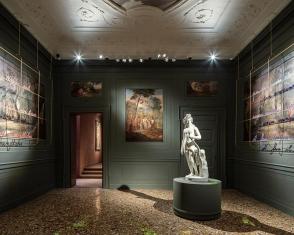
Photo Courtesy Palazzo Maffei
The objects and works in Palazzo Maffei now number over 600 and have been part of our domestic landscape for decades. I remember when I was a child, with my sister Veronica, using the red and blue chair designed by Rietveldt as a playhouse and covering it with a plaid; or when, at Christmas, I put up the William & Mary chinoiserie cabinet and, with my daughters, took out the drawers and filled them with metal baubles. I remember celebrating the arrival of a new work of art in the house, about which Dad would tell us the story and adventures, like De Chirico's ’Amico Ritrovato (The Friend
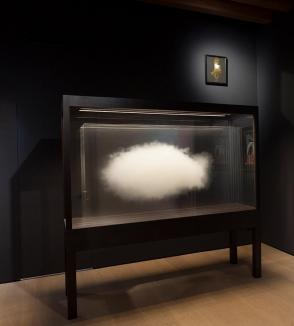
Photo Courtesy Palazzo Maffei
Rediscovered). And I won't forget when Veronese's Holy Family collapsed on the seat that my mother Cristina had just vacated at table: it could have been a tragedy! The decision to open the collection to the public was supported by the family. My father, who always said that art is in the eye of the beholder, had always been fond of a nineteenth-century painting of Piazza delle Erbe that hung above his bed: at night he would look at it and dream that Palazzo Maffei would become the home of the collection... the dream came true and here we are, involved in this new adventure.
Gabriella Belli, the desire for patronage of a collector entrepreneur, Luigi Carlon, has taken material form in Palazzo Maffei. Is this cultural format, which is new for Verona, also his creation? How did the idea come about?

Photo Courtesy Palazzo Maffei
More than five years ago Luigi Carlon imagined that he could move his collection, created over a period of more than fifty years, from his home to the most beautiful building in Verona, overlooking Piazza delle Erbe. At that moment it became necessary to imagine a layout for the collection in the new spaces, to give this transfer a full meaning and make it possible from a museographic point of view. A bond of friendship with the family and a specific expertise – I have had the good fortune to arrange many museum collections, from Palazzo Albere in Trento to the Mart in Rovereto and the Musei Civici in Venice – convinced me to become involved in creating a path with a strong identity for the collection and at the same time with museum characteristics suchthat it could be open to the public, and thus with high standards of quality and reception. Every step was planned, discussed, and approved by Luigi Carlon, who followed the making of the project for his house museum with great attention, accepting my proposals, adding fundamental input and finally entrusting me with the overall direction from the scientific point of view, which found an excellent interlocutor in the Baldessari e Baldessari architectural studio.
The Palazzo now joins the ranks of Italian House Museums. It was actually lived in and was (also) a stage on which to display the prestige of a family of bankers in seventeenth-century Verona. Did you have a particular model in mind when outlining the personality of what is now a 'home for art'?
The Palazzo still seems to bear witness to the power of the Maffei bankers: this can be seen in the beauty of the architecture, which has no equal in Verona. All these elements were helpful and evocative. But we had no pre
-established model in mind for arranging the contents of the museum house, other than that of profound respect for the collection and the choices that Luigi Carlon had already made in his private home: first and foremost the complementarity of ancient and modern, and this is a feature that survives today. And then of course a punctilious attention to the quality and novelty of the layout’s narrative.
What are the strengths of the museographic project in expressing the connection between ancient and contemporary? What does it mean today to break away from a conventional museum image and make a difference?

Photo Courtesy Palazzo Maffei
The fortune of the project lies in having placed the personality of the collector at the centre and in having ‘only’ (but it has been a long road) given voice to his passions, articulating them according to clear museographic criteria that are readable to all. To do this, each individual work had to be given a precise role in the overall narrative, which in my mind had to correspond to an initiatory path of knowledge from ancient to contemporary, but without those academic caesuras marked by divisions by isms and chronology, which would not at all have reflected the spirit and passion of the Carlon collection. And where the collection lacked a coherent connection, site-specific works were commissioned from contemporary artists, creating interesting links between the various epochs and styles and obliging the public to reflect on unprecedented fusions in art history, which is here recounted no longer by categories but by elective affinities.
